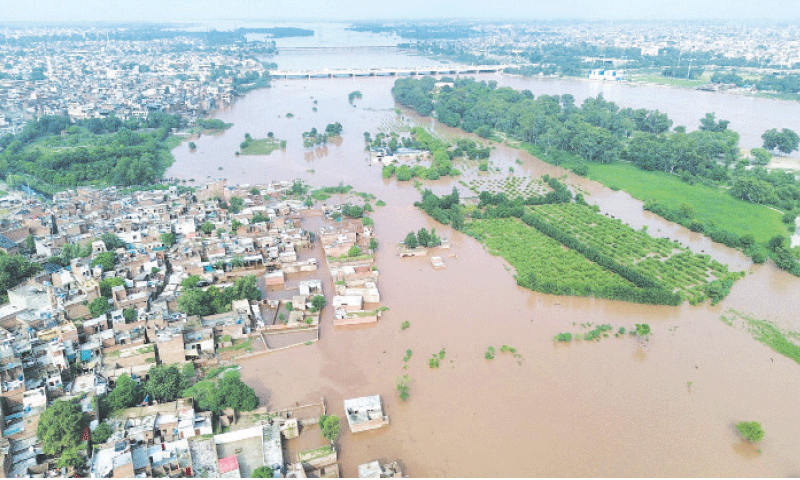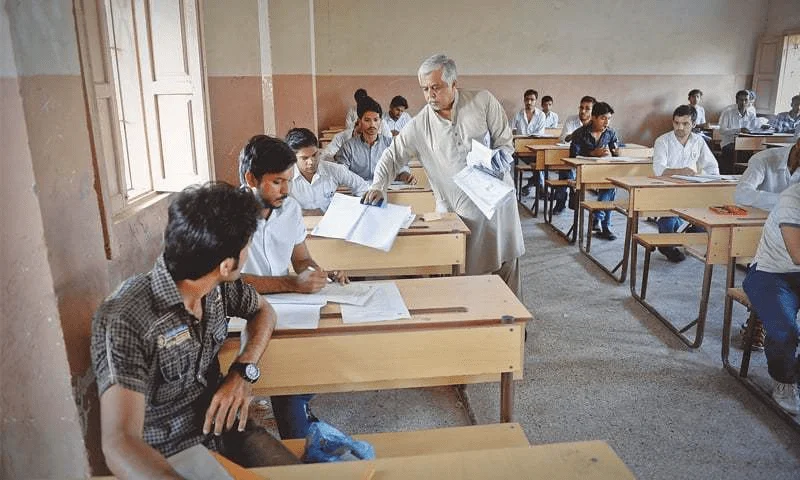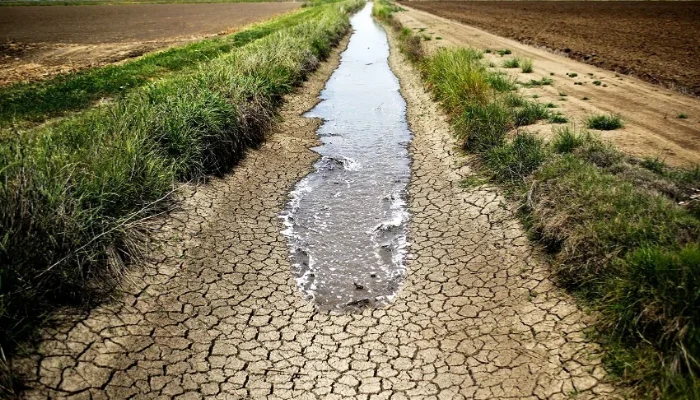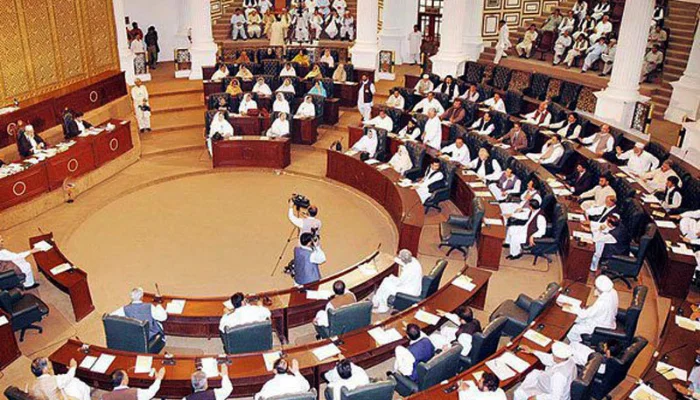Punjab, the agricultural heart of Pakistan, is grappling with one of the worst climate-induced disasters in its recent history. Relentless floods, triggered by overflowing rivers and intense monsoon rains, have submerged entire districts, displaced thousands, and exposed the growing vulnerability of the country in the face of accelerating climate change.
Strategic Breach to Save Cities:
In a desperate attempt to mitigate further devastation, authorities made a critical breach at Riwaz Bridge on the Chenab River. This emergency measure was taken to divert surging floodwaters away from major urban centers, including Jhang and Chiniot, preventing catastrophic structural failures of river embankments.
The breach, however, came at a cost. Nearby districts such as Nankana Sahib, Sheikhupura, and Toba Tek Singh were placed under red alert, with mass evacuations underway. Thousands of residents have been moved to higher ground, with relief agencies mobilizing to provide emergency support.

Punjab Chief Secretary Zahid Akhtar Zaman confirmed the move and emphasized the need for 24/7 monitoring of water levels and embankment integrity. Temporary shelters, mobile medical units, and food supplies have been rushed to the affected zones.
Urban Punjab Not Spared:
Major urban areas, including the provincial capital Lahore, are also bearing the brunt of the deluge. Low-lying areas like Babu Sabu have seen knee-deep water enter homes and streets, prompting Rescue 1122 teams to conduct emergency evacuations using boats and loudspeaker alerts.

In Faisalabad, floodwaters displaced over 3,000 residents across 11 villages. Local authorities have set up six relief camps, offering basic necessities and even fodder for displaced livestock—a lifeline for rural families dependent on animals for their livelihood.
Government Officials on Ground Zero:
Federal Minister for Climate Change and Environmental Coordination Dr. Musadik Malik toured the affected regions along the Chenab River, praising the “heroic dedication” of rescue teams. He reaffirmed the government’s resolve to “leave no one behind” and called for immediate audits of embankments and early warning systems.
Rivers in Surge Mode Across Punjab:
Chenab River: Medium flood levels at Qadirabad and Khanki, with a rising trend at Panjnad.
Ravi River: Extremely high flood at Shahdara, very high at Balloki and GS Wala.
Sutlej River: Medium flooding at Suleimanki, with levels rising near Islam Headworks.
The dangerous surge is not limited to Punjab. Downstream in Sindh, authorities are preparing for the incoming floodwaters. With projections showing flows crossing 800,000 cusecs, officials at Guddu and Panjnad barrages are on high alert. Emergency response teams and irrigation personnel have been deployed to safeguard embankments.
Climate Crisis at Pakistan’s Doorstep:

This unfolding disaster underscores the larger existential threat Pakistan faces due to climate change. Scientists report that over 45% of the country’s 7,500 glaciers have already retreated—a trend that, if continued, could see 60% vanish by 2050. These glaciers feed the Indus River system, the backbone of Pakistan’s water and agriculture supply.
This year alone, over 800 lives have been lost and 1,100 injured due to extreme flooding. Unpredictable monsoons, accelerated glacial melt, and glacial lake outburst floods (GLOFs) have wreaked havoc across the country, displacing thousands and damaging critical infrastructure.
Despite contributing less than 1% to global greenhouse gas emissions, Pakistan ranks among the top ten most vulnerable countries to climate change. Yet its capacity to respond remains hindered by political instability, limited domestic resources, and a lack of sustained international climate financing.
The Path Forward: Urgency on All Fronts:
Experts are calling for immediate, multi-tiered action:
Investment in climate-resilient infrastructure
Deployment of early warning systems
Stronger river management policies
Global cooperation and climate justice
Without rapid intervention, Pakistan’s climate emergency could escalate into a full-scale humanitarian and regional crisis. The situation in Punjab is not an isolated event—it is a warning.
The country, standing quite literally on the front lines of climate change, is sending out an urgent call: act now, or risk the irreversible.

















